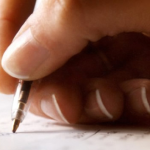The McKenzie method is a classification system and a classification-based treatment for patients with low back pain. A acronym for the McKenzie method is mechanical diagnosis and therapy (MTD). The McKenzie method was developed in 1981 by Robin McKenzie, a physical therapist from New Zealand.
The McKenzie method exists of 3 steps: evaluation, treatment and prevention. The evaluation is received using repeated movements and sustained positions. With the aim to elicit a pattern of pain responses, called centralization, the symptoms of the lower limbs and lower back are classified into 3 subgroups: derangement syndrome, dysfunction syndrome and postural syndrome. The choice of exercises in the McKenzie method is based upon the direction (flexion, extension or lateral shift of the spine). The aims of the therapy are: reducing pain, centralization of symptoms (symptoms migrating into the middle line of the body) and the complete recovery of pain. The prevention step consists of educating and encouraging the patient to exercise regularly and self-care. All exercises for the lumbar spine are repeated a number of times to end-range on spinal symptoms in one direction. When you do only 1 repetition, this will cause pain. When you repeat it several times the pain will decrease. Also after movement termination the changes in pain intensity can persist, which leads to a treatment modality. A single direction of repeated movements or sustained postures leads to sequential and lasting abolition of all distal referred symptoms and subsequent abolition of any remaining spinal pain. For more information on the McKenzie method, Click here
In 10 days, with five physical therapy sessions and me faithfully doing the “extension” exercises four to six times a day at home, I achieved total relief from my severe back pain. From the very first day, the McKenzie therapist told me I should continue playing golf because walking was good for the back, but he told me to do the standing extensions between swings. I played golf after every therapy session. But keep in mind that if your pain has been present for many months, it will likely take longer to gain relief. Give yourself a couple of weeks of faithfully doing the exercises.
As long as I continue doing the extension exercises, along with maintaining correct posture, I expect I’ll continue to have a pain-free back. I now do the extension exercises described above twice a day as part of my normal routine, plus I’ve added several flexion exercises, that is, exercises that have me bending my spine forward. Doing the flexion exercises once you are healed is necessary because the healed tissues and any scar tissue formed during the healing process must be made pliable again so it is not subject to overstretching and re-injury. Flexion exercises include the several bending forward movements (toe-touching, etc.) traditionally recommended to stretch the back muscles. Go slowly when resuming the flexion exercises.
It is important to remember that every session of flexion exercises must be followed by a few extension exercises. Simple standing extensions will suffice.
I do both flexion and extension exercises now, but I do far more extension exercises. Almost every time I rise from a sitting position, I do a couple of standing extensions. And while playing golf, I perform standing extensions before I swing the club and at any time my back feels a bit tight. Good posture, of course, has become part of my life.
For the full article Click here





